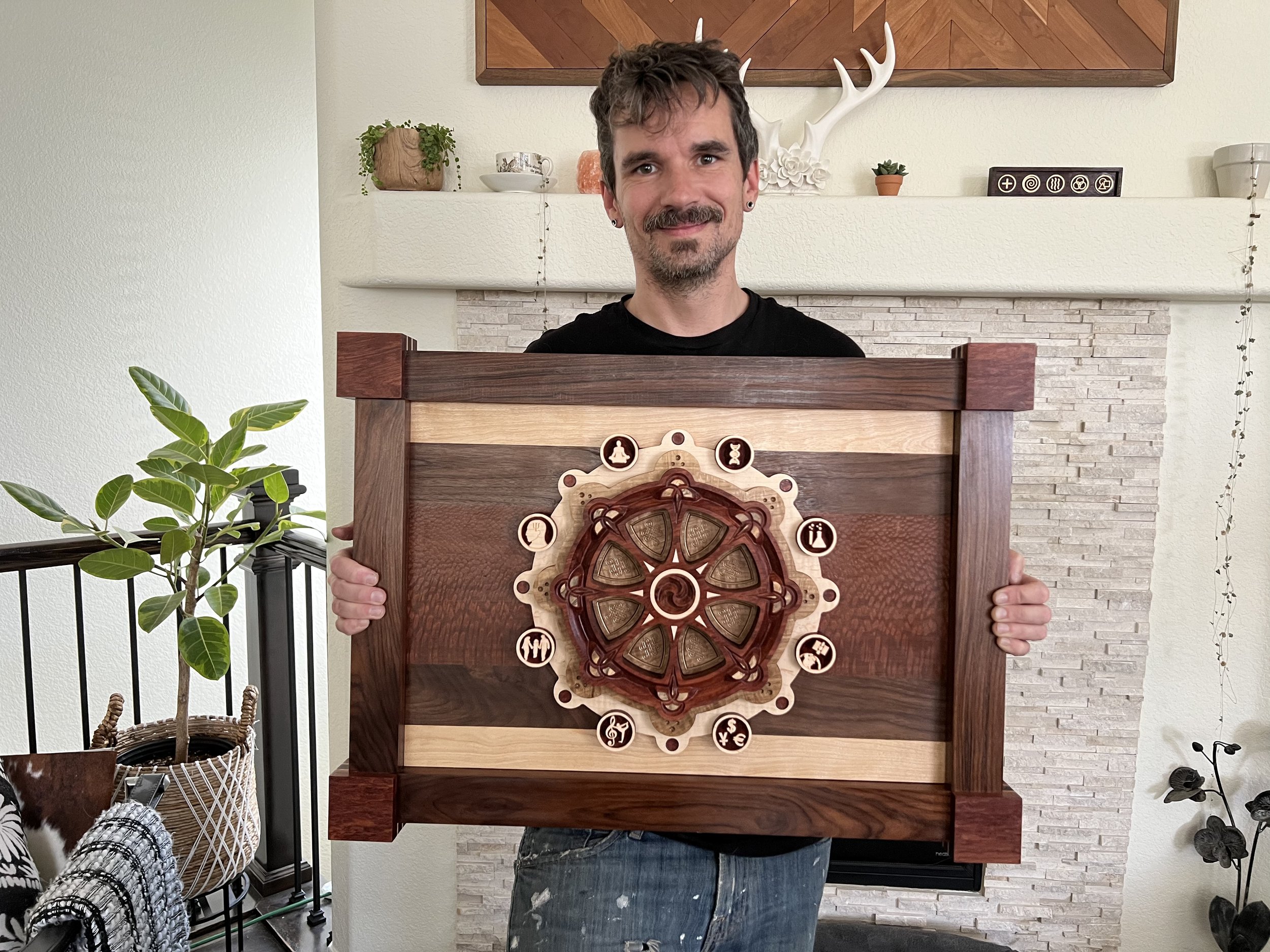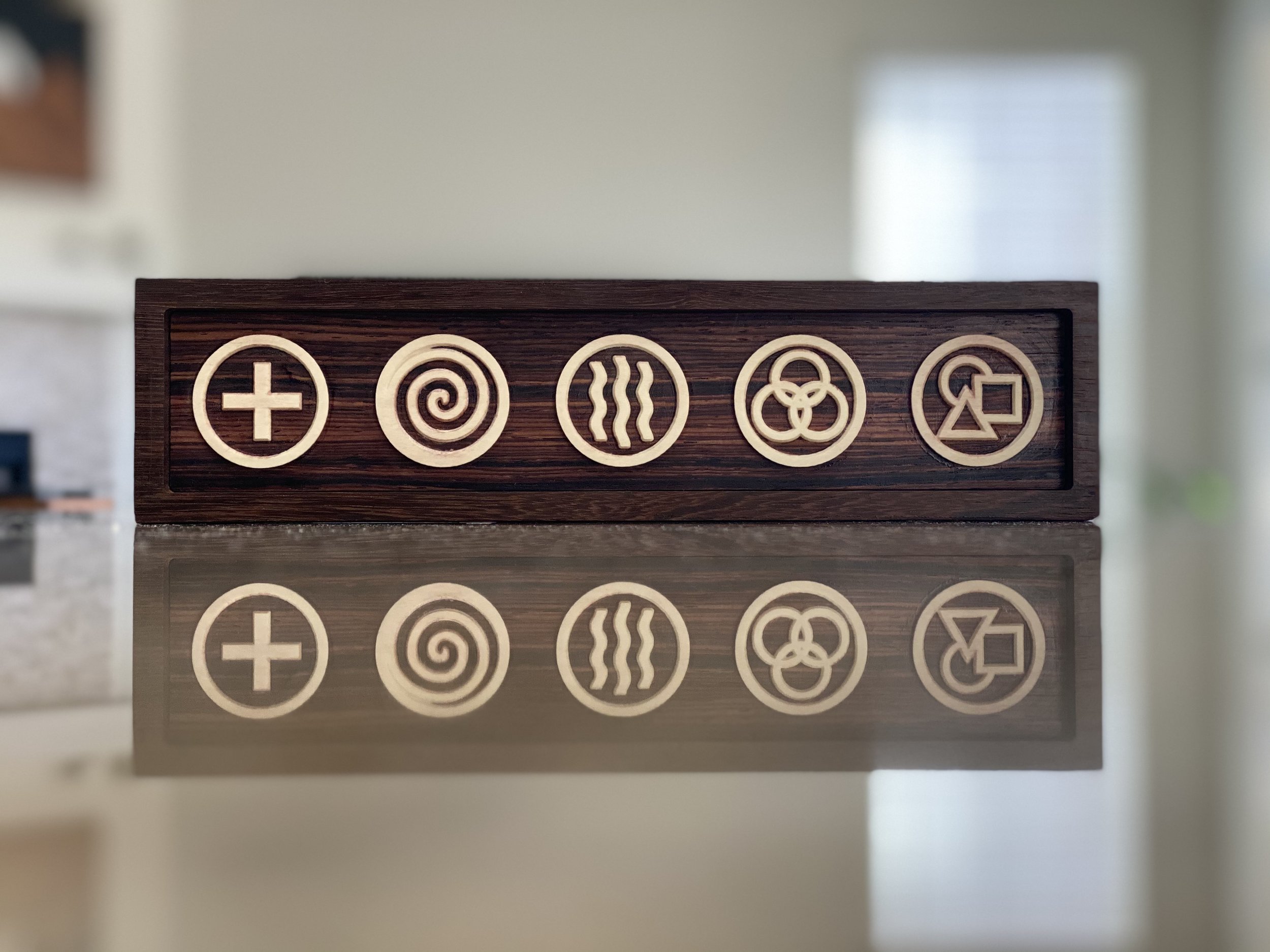
I am Corey deVos — father, artist, writer, producer, and for the last several years, obsessive woodworker who drives his wife crazy by leaving sawdust, power tools, and wood finish all over the house. Sorry love.
My work uses a very wide variety of rare, exotic, and ethically-sourced hardwoods. Alongside traditional and modern woodworking techniques, much of my work is assisted with a CNC machine, a big dumb robot with a spinning blade that does what I tell it to do. It’s a tool that represents to me a confluence of so many of my lifelong passions, and a seamless integration of agrarian, industrial, and informational technologies. I approach this tool as a “STEAM engine”, allowing me to use science, technology, engineering, art, and mathematics together in service of beauty.
This is why I named my studio VisionLogix — because my underlying vision of art is one of integration, of bringing together both hemispheres of art and math, of symbolism and science, of semiotics and robotics. My goal is essentially to bring to life these many icons and ideas that have generated so much meaning for us, and to give people an opportunity to bring a unique piece of integral art into their homes and work spaces that can reflect some of that meaning back to them.
Beautiful ideas deserve to be presented beautifully.
In this interview I discuss several of my artworks in detail, as well as my overall creative process and ideas around “integral art” — that is, art coming from the integral stage of human development, the next step from the postmodern aesthetics we’ve been drenched in for the last several decades.
Working with these many different kinds of wood is a physical, contemplative, and spiritual practice for me, and has dramatically deepened my appreciation for trees themselves — living, breathing organisms that are foundational not only to human civilization, but to the global ecosystem itself. Trees are some of the most fascinating and fundamental organisms on this planet. Every unique tree has a unique story, and those stories are encoded into the physical structure of the tree itself. Every year the tree’s growth and struggles and successes are documented in the grain, in the flesh, in the rings of the wood, each cycle transcending and including the last.
When we cut into a fallen tree, we are cutting into that story. And when we do, we see a unique thumbprint, a cross-section of that tree’s life and history — all those knots and patterns and colors are communicating to us in a language we can never fully understand, but whose beauty and wisdom continues to speak to us.
When I am working on a piece, I am imprinting my idea or vision into the flesh of a once-living organism that has its own unique history and story to tell. And I need to fold that into whatever story I’m trying to tell. Every piece is a dialogue — not only between artist and observer, but also with the voice and legacy of the tree itself.


Purchase or Commission a Piece
If you like any of the pieces above, I’d be delighted to make one for you! Or you can see what’s currently in stock.
